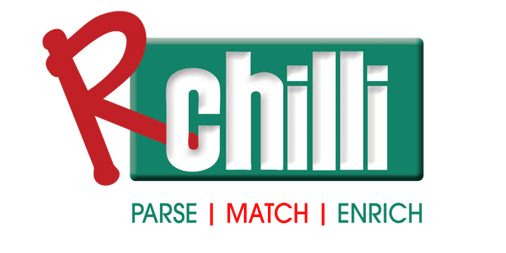Description

Big Biller

Gild
Comprehensive Overview: Big Biller vs Gild
Big Biller and Gild were popular tools in the recruitment software space, but it's important to note that my knowledge is based on information available up to October 2023. Here’s a comprehensive overview of each, focusing on their primary functions, target markets, market share, user base, and key differentiators.
Big Biller
a) Primary Functions and Target Markets
-
Primary Functions:
- Big Biller is an applicant tracking system (ATS) designed to streamline the recruitment process. It offers functionalities like job posting, candidate management, resume parsing, pipeline management, and client management tools.
- It emphasizes ease of use, collaboration features, and the ability to handle large volumes of applicants.
- Big Biller also provides analytics and reporting tools to help recruiters track performance and improve hiring strategies.
-
Target Markets:
- Small to medium-sized recruiting and staffing firms.
- Agencies and independent recruiters looking for a cost-effective solution to manage their recruiting activities.
b) Market Share and User Base
- Big Biller is part of the Top Echelon network, which connects recruiters and hiring managers. While its specific market share is not publicly delineated, it is known in niche markets, particularly among smaller recruitment firms.
- Its user base includes a mix of independent recruiters and mid-sized staffing agencies, appreciating its cost-effectiveness and practical features.
c) Key Differentiating Factors
- Intuitive Interface: Known for having a user-friendly interface that requires minimal training.
- Integration with Top Echelon Network: This allows users to share candidates and job orders within a network of recruiters, offering potentially more placements.
- Cost-Effectiveness: Big Biller offers competitive pricing, making it attractive for smaller recruitment agencies on a budget.
Gild
a) Primary Functions and Target Markets
-
Primary Functions:
- Gild was a recruitment platform known for its skills assessment and talent analytics. It used data-driven approaches to assess the capabilities and suitability of tech candidates.
- The platform specialized in sourcing and scoring technical talent, offering insights based on a candidate’s coding skills and online reputation.
- It provided tools for candidate engagement and analytics to improve hiring decisions.
-
Target Markets:
- Tech companies looking to hire software engineers and IT professionals.
- Enterprises requiring advanced analytics to evaluate technical talent and improve hiring strategies.
b) Market Share and User Base
- Gild was particularly popular in the tech sector, serving companies seeking top engineering talent. Though it aimed to set itself apart with innovative features, information on its precise market share and current status might be outdated.
- Its user base mainly consisted of tech companies and larger enterprises prioritizing data and analytics in their recruitment processes.
c) Key Differentiating Factors
- Data-Driven Hiring: Gild prioritized using data and analytics to assess candidates—especially in the tech industry—making it attractive for companies focused on technical hires.
- Skill Assessment Tools: It had robust tools for evaluating coding skills, which were integral to its appeal among tech recruiters.
- Comprehensive Talent Insights: The platform offered detailed insights into a candidate’s capabilities beyond traditional resumes, enabling more informed hiring decisions.
Comparison
- Functionality and Focus: Big Biller is more focused on providing a straightforward ATS solution, especially catering to smaller recruiting firms. In contrast, Gild was oriented towards data analytics and technical skill assessment, targeting tech companies.
- Market Position: While Big Biller serves a broad range of smaller recruitment firms, Gild was more niche, dealing specifically with technical hiring and analytics.
- Differentiation: Big Biller's strength lies in its network integration and user-friendliness, whereas Gild distinguished itself with innovative analytics and technical assessment tools.
It’s important to verify the current status of Gild, as there might have been changes or developments beyond the data I have, given the fast-evolving nature of recruitment technology.
Contact Info

Year founded :
Not Available
Not Available
Not Available
Not Available
Not Available

Year founded :
2019
Not Available
Not Available
Ukraine
Not Available
Feature Similarity Breakdown: Big Biller, Gild
To provide a comprehensive feature similarity breakdown for Big Biller and Gild, it's important to consider the typical functionalities these recruitment software platforms offer. Please note that this analysis may not include the latest versions as my training only covers up to October 2023.
a) Core Features in Common
Both Big Biller and Gild likely share several core features characteristic of recruitment software:
- Applicant Tracking: Systems to manage candidate applications and track their progress through the recruitment funnel.
- Candidate Database: Access to a centralized database storing candidate profiles, resumes, and pertinent information.
- Job Posting Management: Tools to create, publish, and manage job listings across various platforms.
- Recruitment Analytics: Insights and reporting features to monitor recruitment performance and make data-driven decisions.
- Collaboration Tools: Features that facilitate communication and collaboration among team members.
- Resume Parsing: Technologies for automatically extracting relevant information from resumes to build candidate profiles efficiently.
b) User Interface Comparison
The user interfaces (UI) of Big Biller and Gild may differ based on design philosophy and target user base:
- Big Biller: Known for its straightforward and intuitive UI designed for ease of use. It typically offers a minimalistic and clean interface with logical navigation aimed at recruiters who prefer simplicity and efficiency.
- Gild: Previously known for a more modern and visually appealing interface, combining user-friendly design with insights and data visualization. It caters to users who appreciate aesthetic and interactive elements that enhance user engagement.
Both platforms aim to reduce the learning curve and streamline the user experience, although the level of customization and visual preferences might differ.
c) Unique Features that Set Products Apart
-
Big Biller:
- Built-in CRM: Offers a fully integrated CRM system, which is robust and useful for managing client relationships and sales pipelines alongside recruitment processes.
- Customizable Workflows: Allows for tailored recruitment workflows to better fit specific organizational needs.
-
Gild:
- Talent Intelligence: Historically known for utilizing data-driven insights and machine learning to assess candidate potential based on publicly available data, optimizing the hiring decision process.
- Skill Assessment Tools: Provides more comprehensive skill evaluation features, enabling recruiters to assess candidate technical skills objectively.
When choosing between these platforms, organizations often weigh these unique offerings against their specific business needs and existing operational structure. It's recommended to request a demo or trial to get a firsthand experience of how each tool aligns with your recruitment strategy.
Features

Not Available

Not Available
Best Fit Use Cases: Big Biller, Gild
To provide a detailed comparison of Big Biller and Gild, let's look at their respective ideal use cases, as well as how they cater to different industry verticals and company sizes.
Big Biller
a) Best Fit Use Cases for Big Biller:
-
Recruitment Agencies and Staffing Firms:
- Features: Big Biller is designed as an applicant tracking system (ATS) with a strong emphasis on ease of use, efficiency, and customization. It streamlines the recruitment process with features like candidate management, job posting, and resume parsing.
- Reason: Its intuitive interface and automation capabilities make it a great choice for recruitment agencies that need to manage a high volume of candidates efficiently.
-
Small to Medium-sized Enterprises (SMEs):
- Size: Big Biller is ideal for SMEs that might not have large HR departments or the budget for more complex ATS solutions.
- Benefit: It offers a cost-effective solution for enterprises focused on expanding their workforce without being bogged down by complicated systems.
-
Project-based Hiring:
- Use Case: Companies or projects that require temporary or contract-based staff can benefit from Big Biller's capability to quickly match candidates to job orders.
d) Industry Verticals and Company Sizes:
- Industries: Big Biller caters particularly to industries with high turnover rates or those that frequently require contract or temporary workers, such as healthcare, IT staffing, and retail.
- Company Sizes: Suited for smaller teams and businesses that prioritize ease of use and cost-efficiency in their recruiting processes.
Gild
b) Preferred Scenarios for Gild:
-
Tech and Software Development Companies:
- Features: Gild stands out for its data-driven approach to recruitment, with a heavy focus on skills and performance metrics rather than traditional resumes.
- Reason: It's particularly useful for tech companies looking to identify top talent based on specific technical skills and coding capabilities.
-
Large Corporations with R&D Departments:
- Size: Large organizations can leverage Gild's comprehensive analytics and big data capabilities to streamline hiring for specialized and technical roles.
- Benefit: The platform’s ability to provide deep insights into candidates' skills aligns well with the needs of corporations with substantial research and development efforts.
-
Diversity and Inclusive Hiring Initiatives:
- Use Case: Companies aiming to enhance diversity can take advantage of Gild's metrics and analytics to ensure fair assessments based on skills, helping eliminate unconscious bias in hiring.
d) Industry Verticals and Company Sizes:
- Industries: Best suited for technology-driven industries such as IT, software development, engineering, and other fields where specific skills and expertise are critical.
- Company Sizes: Typically larger enterprises or tech startups focused on scaling quickly with high-caliber technical talent.
In summary, Big Biller is best suited for recruitment agencies, SMEs, and industries with high turnover, emphasizing user-friendliness and affordability. On the other hand, Gild is ideal for tech-focused firms, large organizations, and those prioritizing data-driven and skills-based recruitment, emphasizing analytical rigor and skills assessment.
Pricing

Pricing Not Available

Pricing Not Available
Metrics History
Metrics History
Comparing undefined across companies
Conclusion & Final Verdict: Big Biller vs Gild
To provide a conclusion and final verdict for Big Biller and Gild, let's consider the aspects of value, pros and cons, and recommendations for potential users.
Conclusion and Final Verdict:
a) Overall Value
Considering all factors such as pricing, features, user experience, and support, Big Biller tends to offer the best overall value for small to medium-sized recruitment agencies. It combines user-friendly features with cost-effectiveness, making it suitable for businesses looking to streamline their recruitment processes without incurring high costs.
b) Pros and Cons
Big Biller:
-
Pros:
- User-friendly Interface: The platform is intuitive and easy to navigate, reducing the learning curve for new users.
- Affordable Pricing: Competitive pricing makes it accessible for smaller agencies or startups.
- Comprehensive Features: Includes robust applicant tracking, data management, and reporting tools.
- Customer Support: Generally well-regarded support network that is responsive to user issues.
-
Cons:
- Customizability: Might lack the extensive customization options that larger platforms offer.
- Advanced Features: Some advanced features may require additional integrations or might not be as sophisticated as those in higher-end platforms.
Gild:
-
Pros:
- Innovative Technology: Strong emphasis on AI and data analytics to enhance recruitment processes.
- Detailed Candidate Insights: Provides deep insights into candidate skills and fit through advanced data processing.
- Scalable: Suitable for companies planning to scale their operations.
-
Cons:
- Pricing: Can be more expensive, which might be prohibitive for smaller agencies.
- Complexity: Steeper learning curve due to its technical features and advanced analytical tools.
- Niche Fit: May be better suited for tech-driven industries given its focus on data analytics and AI.
c) Recommendations
-
For Small to Medium Agencies: Big Biller is often the better choice due to its affordability, ease of use, and essential features that meet the needs of typical recruiting workflows without unnecessary complexity.
-
For Larger or Tech-focused Organizations: Gild might be more appropriate, especially if the organization can utilize its advanced analytics and AI features to gain an edge in competitive talent markets.
-
Trial Periods and Demos: If possible, potential users should take advantage of trial periods or demo sessions offered by both platforms to personally assess usability and compatibility with their existing processes.
-
Consider Future Growth: Agencies expecting significant growth should consider whether the platform they choose can scale with their needs or if transitioning to a more expansive system like Gild might offer long-term benefits despite higher initial costs.
The final decision will ultimately depend on the specific needs, budget, and goals of the organization.
Add to compare
Add similar companies




